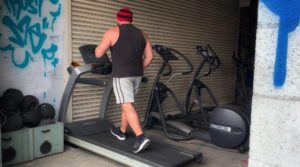The Recovery/Deload Phase is crucial for preventing burnout and allowing your body to heal and adapt from intense training. These workouts are lighter and lower in volume, focusing on active recovery, mobility, and gentle conditioning. Perfect for those needing a break from heavy training while still staying active and maintaining fitness.
Why Choose the Recovery/Deload Phase?
- Prevent Burnout: This phase helps prevent physical and mental burnout by giving your body a break from the high demands of intense training, allowing you to return stronger and more motivated.
- Promote Healing: By reducing intensity and volume, the Recovery/Deload Phase gives your muscles, joints, and nervous system the time they need to repair and regenerate.
- Maintain Fitness: While the focus is on recovery, these workouts still keep you active, ensuring that you maintain your fitness levels without the stress of heavy lifting or intense cardio.
- Improve Mobility and Flexibility: Incorporating mobility and flexibility exercises helps address any tightness or imbalances, setting the stage for better performance in future training phases.
- Mental Refresh: Taking a step back from intense training can also help reset your mindset, reducing stress and reigniting your passion for training.
Key Components of the Recovery/Deload Phase:
- Active Recovery: Low-intensity activities like walking, cycling, or swimming that keep you moving without putting stress on your body.
- Mobility and Stretching: Focused mobility work and stretching routines that improve flexibility, reduce stiffness, and aid in muscle recovery.
- Reduced Volume and Intensity: Workouts are scaled back in both volume and intensity, with lighter weights, fewer sets, and a focus on technique and movement quality.
- Gentle Conditioning: Incorporating light cardio or bodyweight exercises to maintain cardiovascular health and general fitness without taxing your body.
- Mindfulness and Relaxation: Encouraging practices like yoga, meditation, or deep breathing exercises to promote relaxation and mental recovery.
Popular Recovery/Deload Phase Programs:
- 7-Day Active Recovery Plan: A week-long program designed to keep you active while focusing on gentle exercises and mobility work to enhance recovery.
- Full-Body Deload Routine: A program that targets all major muscle groups with lighter weights and lower volume, ensuring you maintain muscle memory and coordination.
- Mobility and Flexibility Focus: A recovery plan centered around improving joint mobility and muscle flexibility, perfect for addressing tightness and preventing injuries.
- Low-Impact Cardio and Stretching: A balanced program combining low-impact cardio with full-body stretching to maintain fitness while promoting recovery.
Sample Workouts:
- Full-Body Deload Workout (40 Minutes):
- Warm-Up (10 Minutes): Light cardio (walking, cycling) and dynamic stretches.
- Workout:
- Exercise 1: Bodyweight Squats – 3 sets of 10-12 reps
- Exercise 2: Push-Ups – 3 sets of 8-10 reps
- Exercise 3: TRX Rows or Light Dumbbell Rows – 3 sets of 10-12 reps
- Exercise 4: Glute Bridges – 3 sets of 15 reps
- Cool-Down (10 Minutes): Static stretching focusing on the lower back, hips, and shoulders
- Active Recovery and Mobility Session (45 Minutes):
- Warm-Up (5 Minutes): Gentle walking or light cycling.
- Mobility Routine (20 Minutes):
- Exercise 1: Hip Circles – 3 sets of 10 reps per side
- Exercise 2: Cat-Cow Stretch – 3 sets of 10 reps
- Exercise 3: Shoulder Pass-Throughs – 3 sets of 12 reps
- Exercise 4: Ankle Mobility Drills – 3 sets of 15 reps
- Active Recovery (15 Minutes):
- Light cycling, swimming, or a leisurely walk
- Cool-Down (5 Minutes): Gentle stretching and deep breathing
Training Tips for the Recovery/Deload Phase:
- Listen to Your Body: Pay close attention to how your body feels during this phase. Use it as an opportunity to address any nagging aches or areas of tightness.
- Prioritize Sleep and Nutrition: Recovery is not just about reducing workout intensity; ensure you’re getting plenty of sleep and proper nutrition to support healing and adaptation.
- Focus on Technique: With lighter weights and lower intensity, this is the perfect time to fine-tune your form and technique for future training phases.
- Stay Consistent: While the workouts are lighter, maintaining consistency is key to ensuring that you stay active and ready for the next phase of training.
- Embrace Mental Relaxation: Use this phase to mentally unwind and recharge. Incorporate activities like yoga, meditation, or even a break from structured training if needed.
Conclusion:
The Recovery/Deload Phase is an essential part of any training program, allowing your body and mind to heal, adapt, and prepare for future challenges. By focusing on active recovery, mobility, and gentle conditioning, these workouts help prevent burnout and keep you on track with your fitness goals.
Call to Action:
Ready to recharge and come back stronger? Explore our Recovery/Deload Phase programs and give your body the rest it needs while staying active and engaged in your fitness journey!












